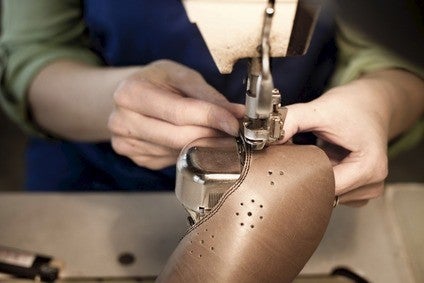
As part of a bid to boost Egypt’s leather exports by 80% to reach US$1bn by 2020, the government has committed to modernise the sector and develop two dedicated manufacturing hubs – one of which will be geared to export markets.
The country’s leather industry took a major hit in terms of lost sales and output during the political and economic instability following the 2011 revolution, and there has been no major investment for the past 15 years to upgrade facilities or improve output.

Discover B2B Marketing That Performs
Combine business intelligence and editorial excellence to reach engaged professionals across 36 leading media platforms.
So, the industry needs a shot in the arm. As a result, the Leather Export Council of Egypt (LEC), part of the finance ministry, is pushing development through two industrial projects to establish a hub of leather producers.
The first is based in 10th of Ramadan City on the outskirts of Cairo, and is comprised of 100 small to medium-sized factories (SMEs). This project will be supplemented by another manufacturing hub at Robiki City, near Badr City, 45 kilometres from Cairo.
The projects will draw on $1bn in state and private investment earmarked for infrastructure development in the leather sector, Dr Khaled Sabry, executive director of the LEC, tells just-style.
Robiki City focus
With the 10th of Ramadan City hub lacking tanning capabilities, the major focus of LEC-coordinated investment is on Robiki City, which will have dedicated manufacturing and tanning facilities that will comply with international standards, and so be able to export to US and European markets.

US Tariffs are shifting - will you react or anticipate?
Don’t let policy changes catch you off guard. Stay proactive with real-time data and expert analysis.
By GlobalDataHistorically Egyptian tanning was centred in Magra Al-Ayoon in Old Cairo, where there are minimal environmental standards. Its old tanneries are to be closed and relocated to Robiki City.
“It is being built to the latest standards regarding the environment and pollution. Not all of the tanneries right now have the proper equipment,” says Dr Sabry.
Another important issue is adding value, with Robiki City able to make finished leather and also turn it into products. “Most exports are in the crust stage, but after Robiki City is developed it will be the finished goods,” says Sabry.
He adds that 90% of production at Robiki will focus on making leather shoes, belts, wallets and garments, with the remainder being geared towards the automotive and furniture sectors. Meanwhile, the hub will also produce 85% of Egypt’s domestic leather tanning production needs.
The first stage of building Robiki City is already underway, with ten tanning factories having moved in as of August this year. There are plans to have a total of some 220 tanneries and 72 factories operating at the hub after the first stage of construction. There are no projected figures yet for unit numbers following a second stage of construction.
Egypt has a sizeable leather export industry, whose average annual income is valued at US$200m. The biggest export markets are Italy, Spain, Hong Kong and Portugal, for buyers such as Kenzo, Louis Vuitton and Zara, according to Ahmed Rabie, vice executive director and international marketing specialist at the LEC.
Egypt faces regional competition from Morocco and Tunisia, and further afield from Bangladesh, Pakistan and China.
Dr Sabry says the export focus will be shoes, although at present 75% to 80% of current production is for the domestic market.
The sector’s development has also been encouraged by the government raising import tariffs in 2016. As a result, the import of Chinese shoes has dropped by some 50%.
This has bolstered domestic production and, with Egyptians wanting low cost shoes, Dr Sabry also believes this presents exports opportunities. “Egyptian shoes are very suitable for Africa regarding quality, design and price. It’s a good opportunity for Egypt to penetrate the African market.”
To make such an expansion, sourcing trained labour will be an issue, but Robiki City will also sport a purpose built, state-backed technological centre for training and design.
Sabry believes Egypt will be able to compete on cost, with the price per square foot for leather hovering around US$2.
The majority of the leather will be domestically sourced, primarily from sheep, with Egypt having 3.7m head of buffalo, 4.8m heads of cattle, and 5.46m sheep, according to ministry of agriculture and land reclamation figures.
With greater political and economic stability returning to Egypt nearly seven years after the uprising that overthrew President Hosni Mubarak, the country’s garment exports are also rebounding.





